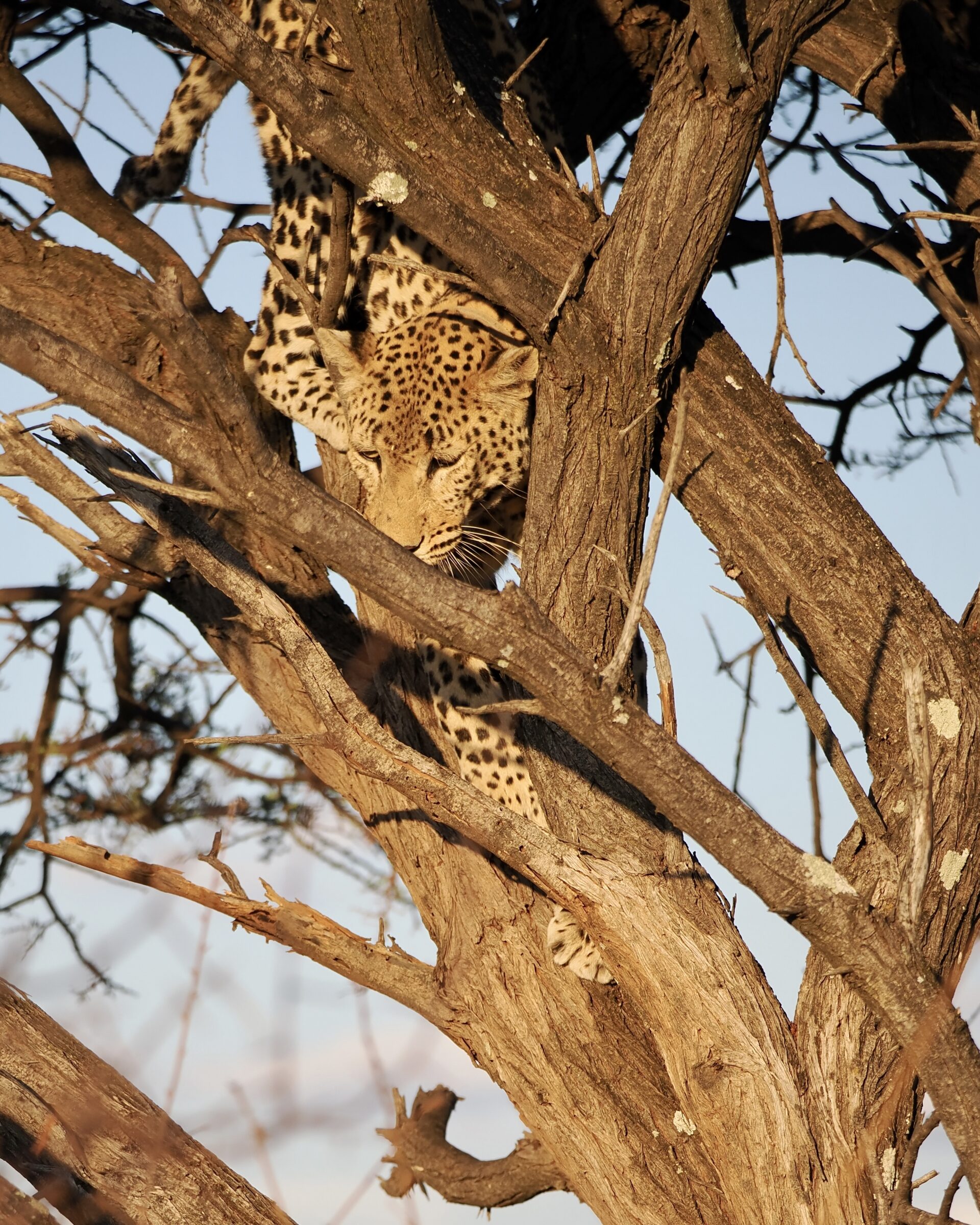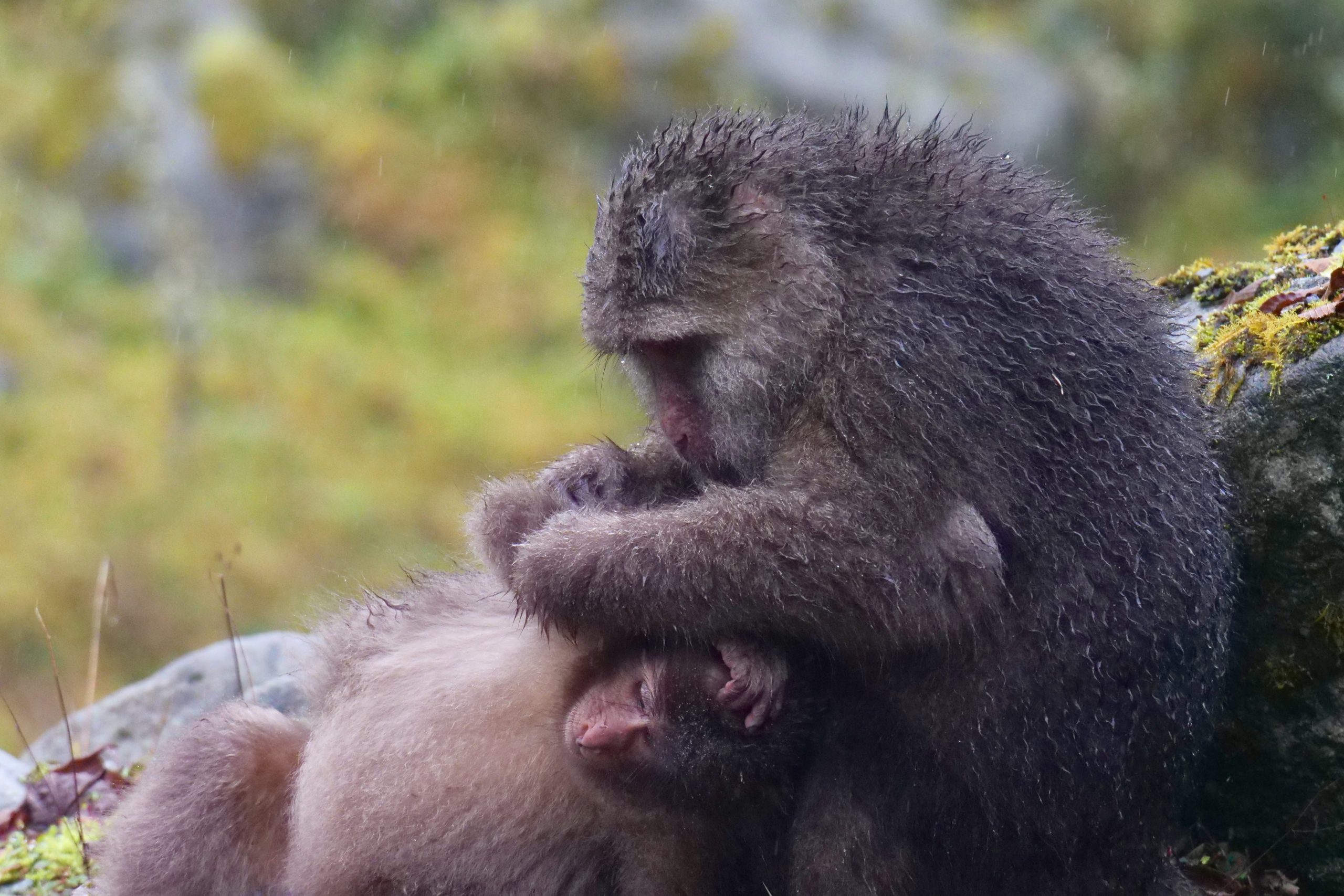On Thursday – the second day of our current “expedition” to Namibia – my beloved and I had our lifetimes’ most exciting (to date) close-range encounter with a wild carnivore.
The featured image’s leopard is coming back down from the tree in which she had just stashed “the kill” she had made that afternoon.
2 Comments








